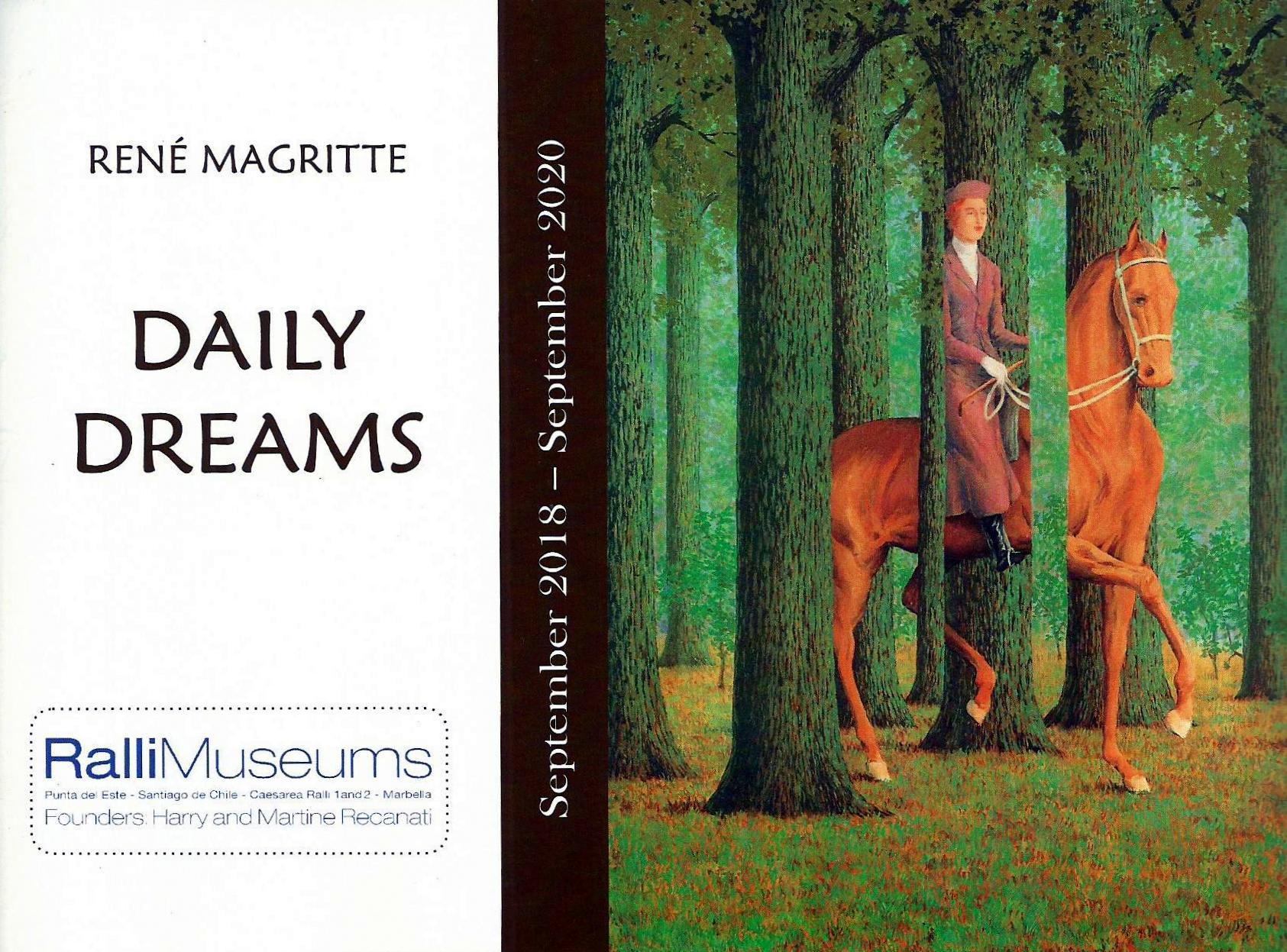
Viewing René Magritte’s (1898–1967) works, one can easily identify his particular style. His imagery, namely the faceless man with his bowl hat; the variety of curtains and nightgowns; the apple; the scenery embedded in the landscape; the gigantic eye that is a sort of celestial aquarium; the locomotive emerging out of a fireplace enveloping it with smoke – all these images have long ago become cultural icons and since the 50’s of the 20th century, turned into a widespreading
cultural industry and have been easily stenciled, duplicated, and
incorporated on all sorts of magnets and posters, kitchen towels, office walls, book bindings and souvenirs – alongside The Mona Lisa, Van Gogh’s sunflowers and Vermeer’s milkmaid.
Magritte, who at the end of the 20’s of the 20th century joined André Breton’s Parisian circle (and abandoned it as did many others, after an argument initiated by the latter) has never become part of the Surrealist movement. He differed from them with his persistence on distancing himself from the realms of the dreamy, grotesque outcries (even though he also engaged sometimes in encounters between dreams and reality within which dwell both violence and poetic themes), while focusing on creating a characteristic small middle-class miolieu where the daily routines and expressiveness cling to a perfection that borders on pedantry.
One can compare Magritte’s famous eye (from the painting The False Mirror; le faux miroir), that borders the sky between its pupils, with the eye being sliced, at the beginning of Salvador Dali’s and Louis Bunuel’s film Andalusian Dog to understand how different Magritte’s world is from those who worship the expressiveness of the unconscious. However, the façade of Magritte’s so-called conservative bourgeois attitude was nonetheless a continuous attempt to explore the interrelations between the sign, the signifier, and the signified between words and objects; a connection that according to Magritte has no commitment to reality, since any such attempt to represent reality lies upon an arbitrary basis This is the meaning of the statements written at the bottom of some tens of Magritte’s works, of which the most famous one is “This is not a pipe” (Ceci n’est pas une pipe), above which he drew a pipe. This is the meaning of the frame of the painting that closes a woods (and thus represents a real woods within the boundaries of the painting), but also dwells within it; of the sky enveloping the house belongings as a live wall-paper; of inter-mingling the Renaissance diptych panels (dividing the painting into separate parts) into a whole one entity: the man whose back is a woman; the rock that a part of it (its backside?
the front part?) is a cloud; And the nocturnal landscape with its electric lights above which hovers daylight.
Magritte, who for his livelihood engaged in commercial illustration and graphic design, and some claim that he also forged works of famous painters during and even after World War II (and perhaps created knowingly pastiches), became against his will, one of the fore-runners of Pop Art that heartily adopted the lightness with which its imagery is duplicated.
Nevertheless, exploring his world while taking into account the nihilistic
negation of Dadaism (at the second decade of the 20th century), on the one hand, and pure conceptualism (from the second half of the 20th century), on the other hand – such exploration would reveal that something in Magritte’s
world has preserved, in a strange way, a very distinct non-conformistc basis; the perpetual questioning of norms of representation in the framework of the bourgeois society. What is seen by the naked eye is not reality.
What may be interpreted at first as a bourgeois fantasy is a kind of honeycomb trap to the eye of the viewer, who is drawn to the attractive imagery and forcibly into a reflective process. Such polite act of defiance is actual and existing even
in the days after World War II, a war that presented the madness of the Surrealists and their disruptive behavior in quite a pathetic light. One may interpret the expressions of this world as arithmetic of daily dreams, that might point to a possible representation of a different kind of existence.
Credit: Uri Hollander